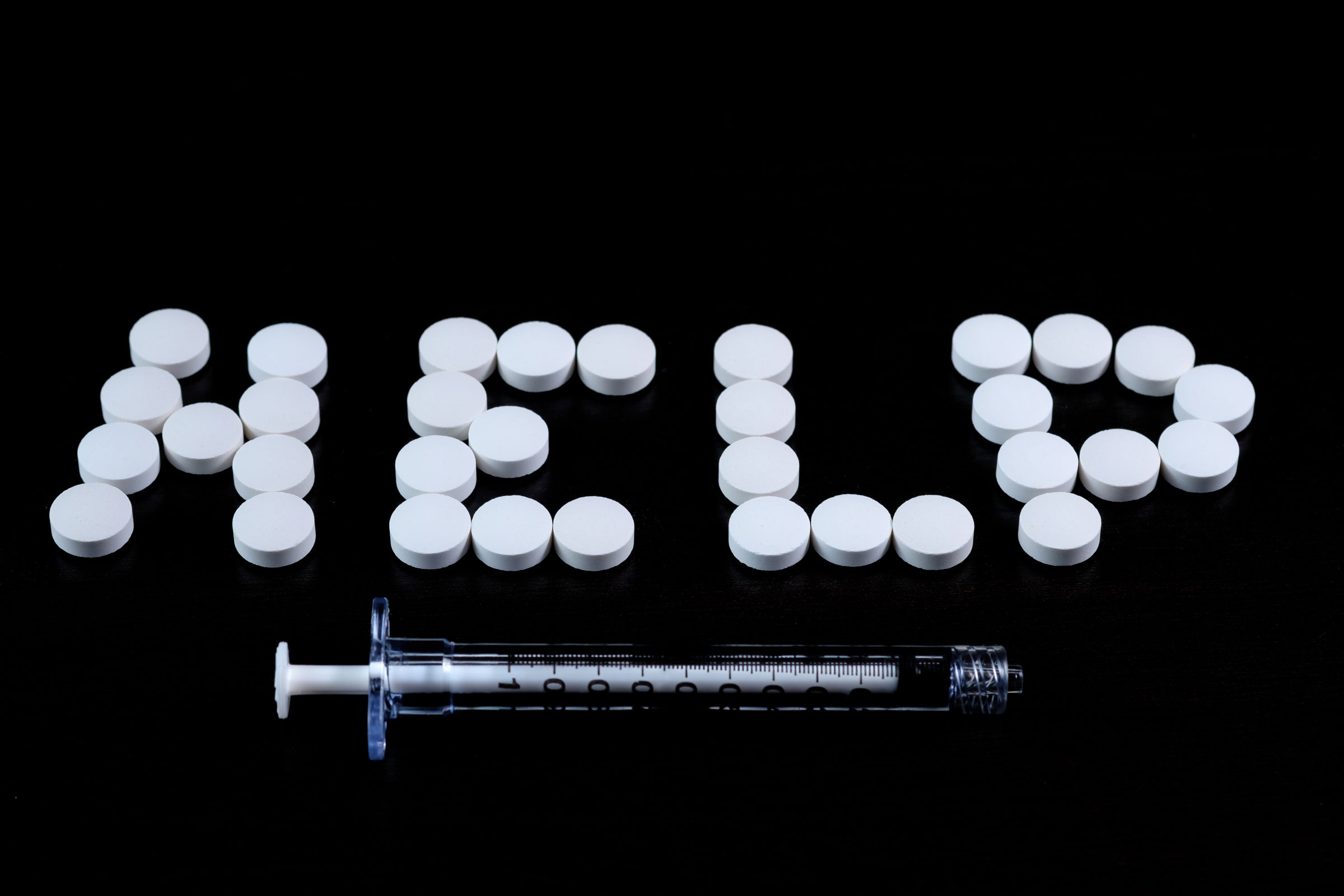
Rob Franklin, DVM, DACVIM, chairman of the AAEP Wellness work group, organized an afternoon session entitled “Recognizing and Managing Addiction in Practice.” Leading off the program, Franklin described his experience with an associate veterinarian who overdosed while at work at a small animal practice that he owned. His vacation with his family was cut short, and he was soon embroiled in a series of interactions with state and federal authorities that threatened his future ability to practice.
Because of his trust in and personal relationship with this employee, he disregarded early warning signs and failed to follow good practices. Thankfully, Franklin was able to weather the storm, correct deficiencies in his controlled substance protocols and continue his career. His experience was a clear example of the wide ripple effect that drug addiction can create.
Practice owners are responsible for the conduct of all veterinarians practicing as agents using the owner’s DEA number. Strict protocols and procedures for managing controlled substances should be in place at all practices. Franklin’s practices now require applicants for employment to submit to drug testing and give permission for random testing throughout the terms of their employment. All prospective employees have a DEA background check performed, as well. Within all of his practices, strict requirements for controlled substance logs are followed, and a monthly audit with a physical count is performed.
Following this sobering introduction to the topic, a courageous and humble veterinarian described his battle with opioid and alcohol addiction and the struggle he continues to live with daily. Now happily married with a family, this doctor understands the risks of relapse and described his efforts to remain alcohol- and drug-free for the rest of his life. The message he felt was important to impart is that recovery is possible, although most addicts relapse at least two to three times along their journeys.
Addiction
Dr. Joseph Garbely, a physician from the Caron Treatment Centers (www.caron. org), based in Pennsylvania, then spoke at length about the neurobiology of the disease of addiction. In 2017, Garbely reported, there were 70,237 drug overdose deaths in the United States. The age-adjusted rate of drug overdose deaths in 2017 (21.7 per 100,000) was 9.6% higher than the rate in 2016 (19.8). Adults aged 25 to 54 had higher rates of drug overdose deaths in 2017 than those aged 15–24, 55–64 and 65 and over. Of the more than 70,000 deaths, two-thirds were from opioids, of which 20,045 were synthetic and 15,448 were heroin. Shockingly, he reported that drug overdose is now the leading cause of death for Americans under 50 years of age.
The primary reason for the recent increase in deaths is the acceleration of illegal imports of fentanyl from China, which does not regulate this drug. Current street drugs such as heroin, cocaine and methamphetamine are frequently “cut” with fentanyl, which is 40-50 times more powerful than heroin and 50-100 times more potent than morphine. It is no surprise that users are overdosing, as they cannot judge the strength of the drugs they buy, the speaker relayed. In addition, Garbely described how fentanyl powder is processed into pills that resemble prescription products from the opioid family. Overdose death from opioids occurs because of respiratory suppression.
Addiction is a chronic disease with a consistent pattern of signs and symptoms, Garbely explained. It is neither caused by a person being evil nor by lack of moral fiber, he said. According to the American Society of Addiction Medicine (ASAM), addiction is a primary, chronic disease of brain reward, motivation, memory and related circuitry. Dysfunction of these circuits leads to characteristic biological, psychological, social and spiritual manifestations.
This is reflected in an individual pathologically pursuing reward and/ or relief by substance use and other behaviors. Addiction is characterized by an inability to consistently abstain, impairment in behavioral control, craving, diminished recognition of significant problems with one’s behaviors and interpersonal relationships, and a dysfunctional emotional response. Like other chronic diseases, addiction often involves cycles of relapse and remission. Without treatment or engagement in recovery activities, addiction is progressive and can result in disability or premature death.
Garbely explained that addiction affects neurotransmission and interactions within reward structures of the brain, including the nucleus accumbens, anterior cingulate cortex, basal forebrain and amygdala. This causes motivation to be altered and addictive behaviors to replace healthy, self-caring behaviors. Addiction also affects the memory of previous exposures to “rewards,” he said, which triggers craving and/or engagement in addictive behaviors. He further shared that the neuro-biology of addiction encompasses more than just the neurochemistry of reward.
“The frontal cortex of the brain and underlying white matter connections between the frontal cortex and circuits of reward, motivation and memory are fundamental in the manifestations of altered impulse control, altered judgment and the dysfunctional pursuit of rewards seen in addicts,” Garbely said.
Because the frontal lobes are important in inhibiting impulsivity and appropriately delaying gratification, addicts, who have diminished frontal lobe performance, continue to engage in substance use and other addictive behaviors despite experiencing many cumulative adverse consequences. Frighteningly, Garbely reported that because frontal lobe connectivity and functioning are still in the process of maturation until the age of 20 in females and 26 in males, early exposure to substance use is a significant factor in the development of addiction.
Genetic factors account for about half of the likelihood that an individual will develop addiction, said the speaker. Addiction to opioids, cocaine and alcohol have an increased heritability. Environmental factors and acquired resiliencies interact with the person’s biology and affect the extent to which genetic factors exert their influence.
Garbely discussed how people choose to use drugs initially because it makes them feel good or is a social activity, but that those with addictive tendencies might be unable to stop. After the initial use, which gives them a feeling of markedly enhanced well-being, these users can experience lows that are well below their normal baselines. Subsequent use of drugs often occurs in an attempt to feel “normal” again, he said, or to avoid the misery they feel when they are not using.
While tolerance develops to the “high,” tolerance does not develop to the emotional low associated with the cycle of intoxication and withdrawal, he explained. Thus, in addiction, persons repeatedly attempt to create a “high,” but what they mostly experience is a deeper and deeper “low.”
While anyone might want to get “high,” those with addiction feel a need to use the addictive substance or engage in the addictive behavior in order to try to resolve their dysphoric emotional state or their physiological symptoms of withdrawal. Persons with addiction compulsively use even though it might not make them feel good—in some cases, long after the pursuit of “rewards” ceases to actually be pleasurable. Addicts develop changes in their brain chemistry that essentially rewire the brain to crave reward and ignore messages from the brain’s executive functioning.
In closing, Garbely gave the hopeful message that recovery is hard work, but it is possible. The speaker said that one year of abstinence was necessary before the likelihood of relapse was better than 50%. After five years “clean,” a former addict’s risk of becoming addicted again is similar to the risk of the general population.
Substance Abuse
Dr. Gregory Gable, a clinical psychologist from the Caron Center, spoke about the prevalence of substance abuse in medicine, citing that 15% of physicians are impaired at some point in their lives. Alcohol is the most addictive substance among physicians, he reported. In his opinion, “substance abuse is an occupational hazard.” As veterinarians share many of the same stressors that physicians face, he opined that substance abuse was likely to occur at similar levels in our profession.
The factors that doctors exhibit that promote their success—such as a drive for achievement, perfectionism, exceptional conscientiousness, the ability to delay gratification and exhibit self denial— also promote mental health problems such as anxiety and depression, he said. Barriers to doctors getting help include the fact that “doctors have a hard time asking for help. They want to self-help and self-decide,” said Gable.
He reported that impaired medical professionals typically do not exhibit changes to their professional performance until well into their addiction. “The job is the last thing to go,” he said.
The signs that a substance abuse problem is present include discord in personal relationships, diminished social activities or behavioral changes in social settings. There might also be mental changes in cognition or coordination, or an increase in work shifts to increase access to drugs that they might be diverting. Becoming easily overwhelmed by routine tasks, coming to work under the influence, physical changes such as weight gain or loss, spiritual bankruptcy where values are abandoned and professional performance failures are other signs.
When comparing the average length of drug use to time of intervention by family or colleagues after these signs appear, Gable reported that alcohol is the longest, at 14.5 years. For prescription opioids, it’s about six years, and for fentanyl, three to six months (or death).
Brain scans differ markedly between those with no drug use and those who have addiction. It takes a lengthy period before these scans normalize, he said. Because of the high risk of relapse, the speaker emphasized that treatment for addiction needs to include attention to previous trauma or emotional wounds. These factors might lead a person to feel inadequate, anxious, shamed and “defective,” needing to be perfect, hearing an inner negative voice, and feeling compelled to hide his or her emotions in order to be accepted or loved.
Gable reported that through therapy, patients gain self-acceptance and growth that decreases their risk for relapse. He reported that medical professionals are more likely to reach lasting recovery than the general population if they receive appropriate treatment.
Take-Home Message
There are serious ramifications in our country and across our medical professions with growing substance abuse and addiction. All practitioners need to be well informed and take appropriate actions to protect their practices and help those in need, whether in their own families or their own practices.








